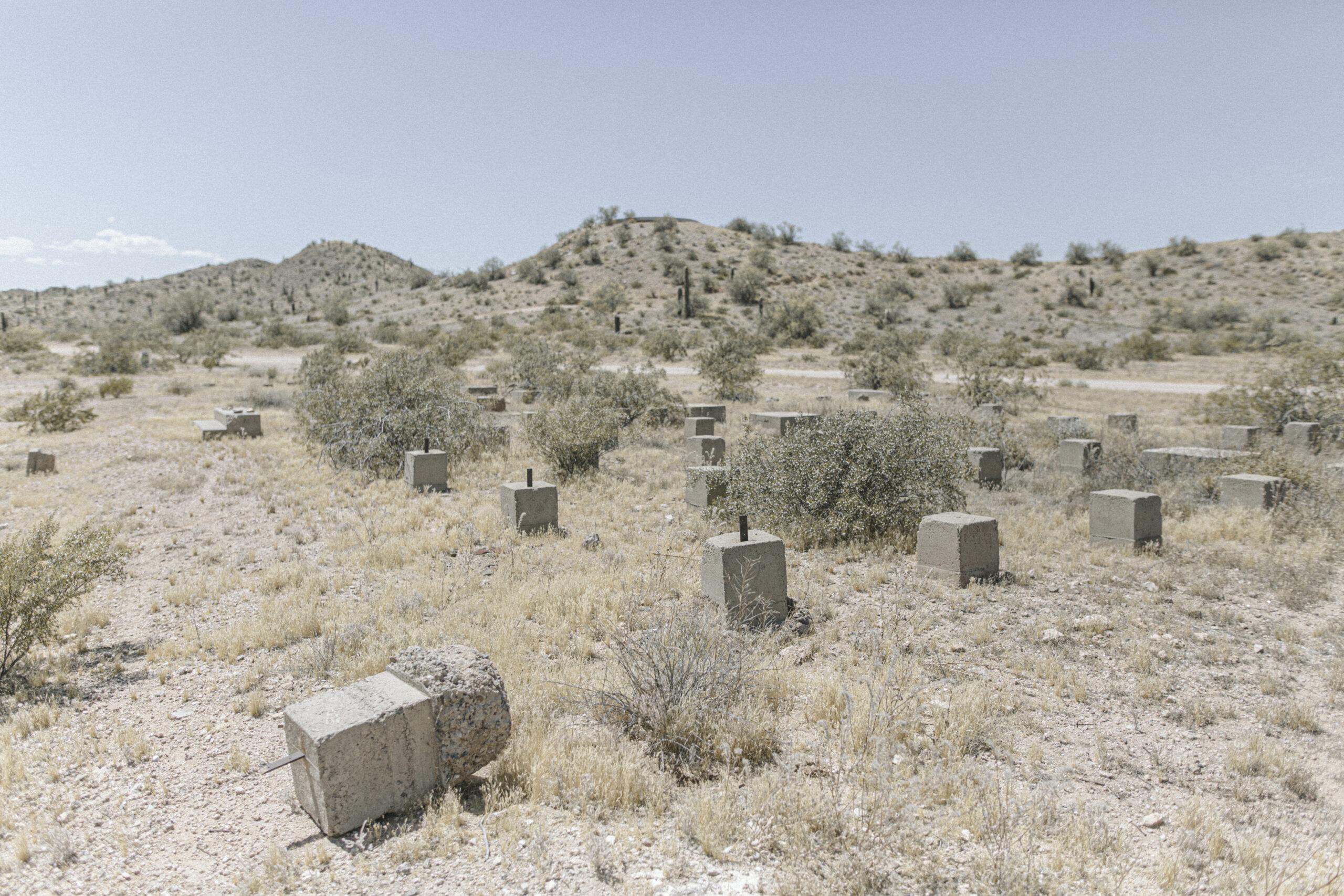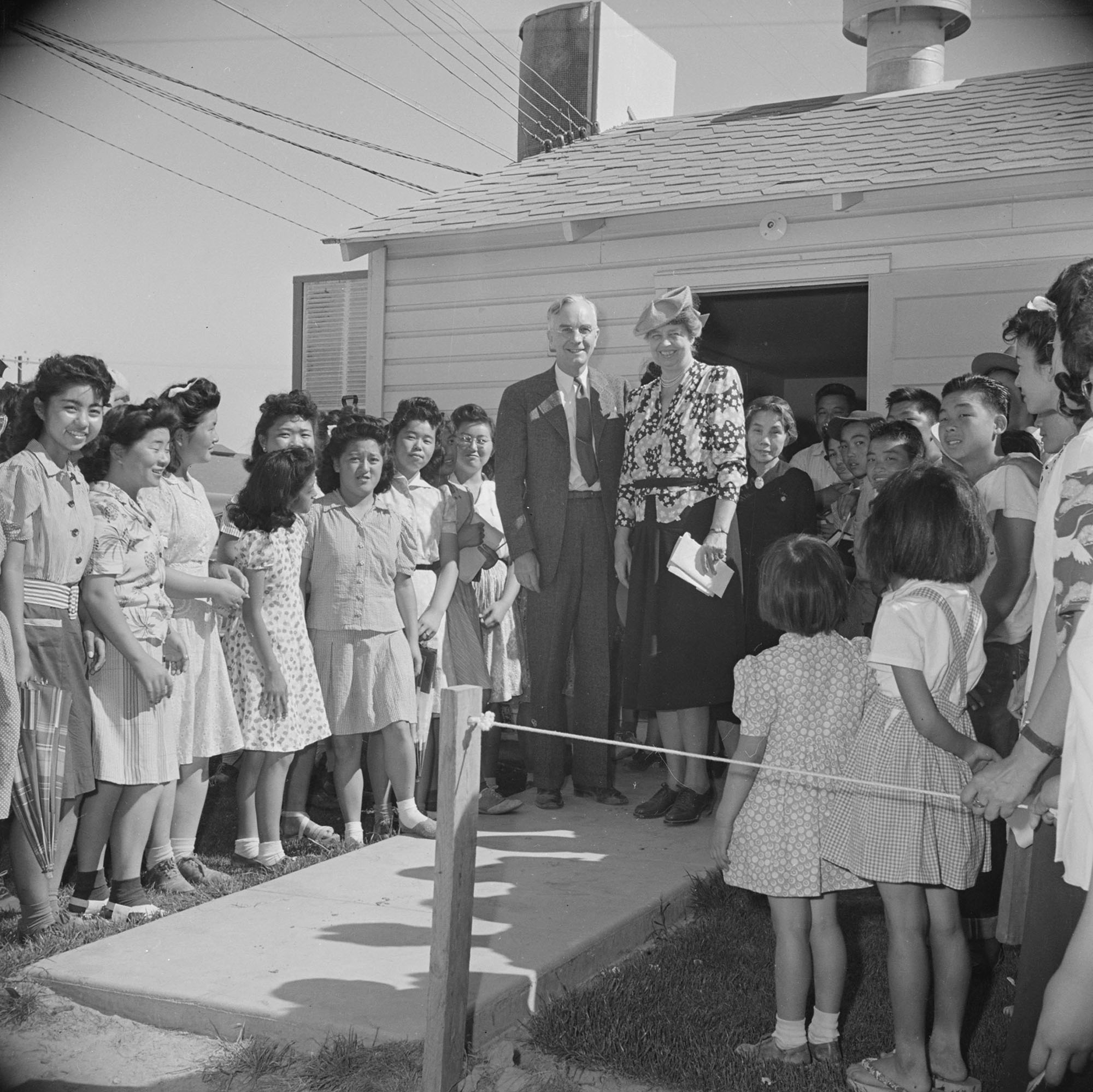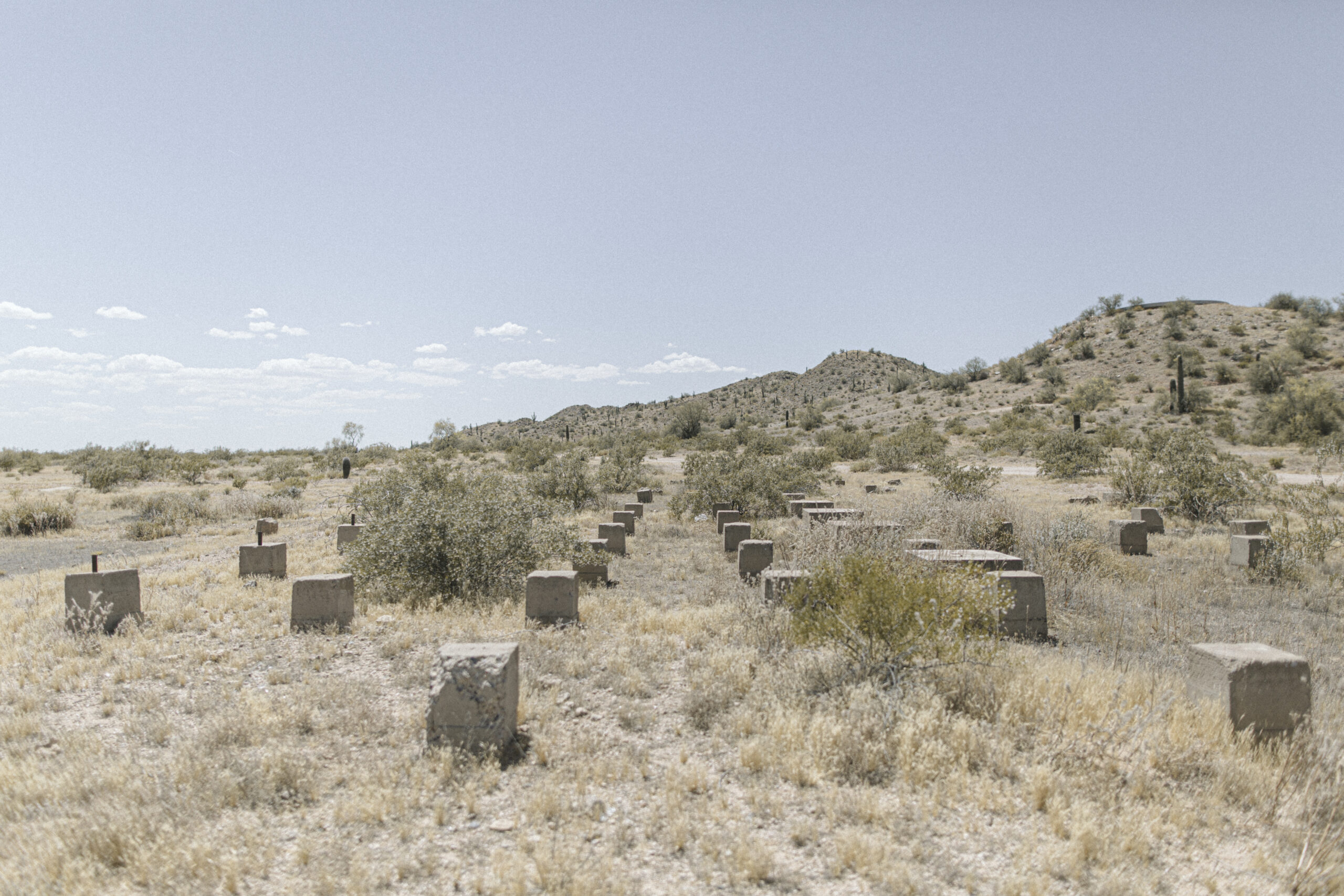
Located 50 miles south of Phoenix, Rivers Relocation Center—known as Gila River—is a War Relocation Authority concentration camp located on the ancestral land of the Akimel O’otham and Pee-Posh of the Gila River Indian Community. It was named after Jim Rivers, the first Akimel O’otham killed in World War I.


The War Relocation Authority‘s master plot plan for Gila River. Courtesy of the National Archives and Records Administration.
The concentration camp was situated on 16,500 acres in an arid desert valley north of the Sacaton Mountains, where summer temperatures reached a scorching 125 degrees and winter temperatures dipped 35 degrees below zero. It consisted of two separate camps: Canal and Butte, located three and a half miles apart.

A view of the northwest section of Butte, one of two separate camps at Gila River. Courtesy of the National Archives and Records Administration.

A view of the northwest section of Butte, one of two separate camps at Gila River. May 14, 2024.
Despite the harsh climate, incarcerees were housed in white beaverboard barracks that were not insulated. Some incarcerees built makeshift swamp coolers or dug subterranean spaces under their barracks to escape the extreme heat. Others made concrete fish ponds to cool their surroundings and planted trees to provide shade.

This half circle monument—which was constructed by Issei incarcerees in 1944 to commemorate those who served in the 442nd Regimental Combat Team—is one of the few remaining structures at the Butte section of the Gila River concentration camp.

Another monument—built much later in 1995 with permission from the Gila River Indian Community—commemorates those who were incarcerated at the neighboring Canal section of the Gila River concentration camp.

Gila River is dotted with hundreds of garden features like decorative pathways made of tin cans and ornamental stones. There are also dozens of concrete fish ponds like this one, which incarcerees built to stave off the Arizona heat.

Many incarcerees prioritized continuing their children’s education while detained in camp. Foundations of classroom buildings for subjects like science, home economics and vocational arts remain at the site today.
Over half of the incarcerees worked for meager wages in the camp, with almost 900 men and women growing produce. Just months after the farming began in July of 1942, the camp had produced 242,000 pounds of produce. By 1944, Gila River was responsible for sending over four million pounds of produce to the other War Relocation Authority camps.
Regardless, the local press criticized the incarcerees, accusing them of not contributing enough to the cotton harvest and other wartime efforts. In October 1942, one newspaper falsely claimed that only one out of 100 inmates volunteered to pick cotton and alleged that the camps were taking teachers and other resources away from Arizona’s public schools. In response to these criticisms, First Lady Eleanor Roosevelt visited Gila River on April 24, 1943 to tour the camp and highlight the incarcerees’ contributions to the war effort.

First Lady Eleanor Roosevelt, accompanied by National Director of the War Relocation Authority Dillon Myer, visits the Gila River concentration camp. April 23, 1943.
Gila River was shut down in stages, with Butte closing on September 28, 1945, Canal closing on November 10, 1945, and the entire camp shutting down on November 16, 1945. Access to the camp is currently restricted, and visitors must obtain a permit from the Gila River Indian Community to enter the site.


After the war ended, many incarcerees—especially older Issei—were hesitant to return to their home states due to fears of prejudice. However, they were not permitted to remain on Gila River Indian Community land. Hastily discarded ceramics, glassware and other household items remain at the site today.
Why is Gila River significant?


When the camp closed in 1945, the War Relocation Authority removed vital utilities like water and electricity and left behind broken cisterns, concrete foundations and piles of refuse in their place.
Before the War Relocation Authority chose the Gila River site to house its concentration camp, they considered other areas in Arizona like Cortaro Farms, Fort Mohave and Beardsley. However, these sites were eventually rejected because they were either too expensive to build on or too close to restricted military areas. Despite objections from the Gila River Indian Community, the Gila River site was selected on March 18, 1942.
The War Relocation Authority leased the 16,500 acres for the concentration camp from the Bureau of Indian Affairs under a five-year permit. Under the lease terms, the War Relocation Authority agreed to develop agricultural lands and to build roads to connect the project area with state highways. However, after Gila River was shut down on November 16, 1945, the War Relocation Authority not only failed to fulfill its promise to cultivate the leased land, but they removed key infrastructure built for the camp—like water pipes and electrical wiring—leaving only concrete foundations behind. In addition, the War Relocation Authority declined to allocate funds for cleaning up the foundations and other refuse left behind after the war, making the land unusable for the Gila River Indian Community.
Despite this history, the Gila River Indian Community has worked with the Japanese American community to preserve the site and facilitate in-person pilgrimages for survivors and descendants of the Gila River concentration camp.


